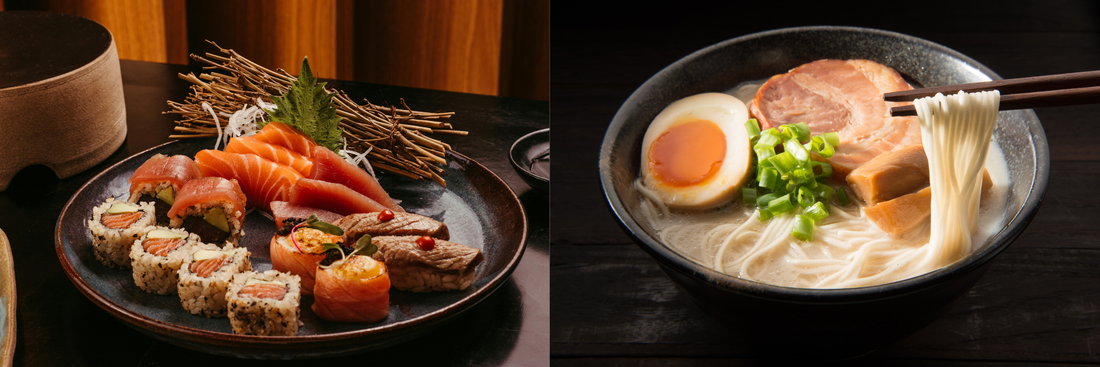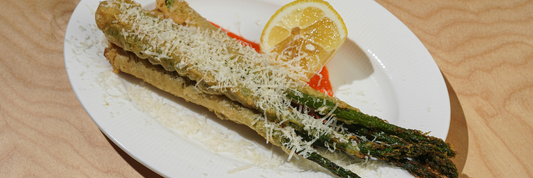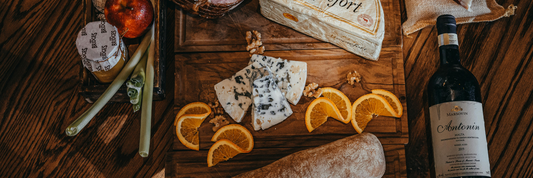In recent years, sushi and ramen have moved far beyond their traditional roots, becoming global culinary icons that constantly evolve to meet changing tastes and values. As sustainability and health take center stage, chefs and brands alike are redefining what goes into each roll and bowl. For food businesses and restaurant owners, understanding these ingredient trends is key to staying relevant in 2026’s competitive landscape.
At Kimecopak, we believe that the future of food doesn’t just depend on what’s served but also on how it’s presented. As sushi and ramen evolve with cleaner, greener, and more local ingredients, sustainable packaging plays an equally vital role in delivering freshness and aligning with eco-conscious consumers’ values.
-
Solutions to Reduce Food Waste in Ramen & Sushi Restaurants
- The Difference Between Ramen Dine-In and Ramen Delivery Business Models
- Sushi & Wine/Beer Pairing: A New Trend in Fine Dining
Rise of Plant-Based and Alternative Proteins
As consumers become more health-aware and environmentally conscious, the demand for plant-based options in Japanese cuisine continues to grow.
Plant-Based Tuna and Salmon
Chefs are experimenting with soy, konjac, and pea protein-based alternatives to recreate the texture and flavor of traditional fish. These innovations not only address overfishing concerns but also attract flexitarians seeking a guilt-free sushi experience.
Vegan Ramen Broths
Instead of pork-based tonkotsu, 2026 will see more ramen houses featuring umami-rich broths made from mushrooms, miso, seaweed, and roasted vegetables. These lighter yet flavorful bases cater to a new generation that values clean eating and sustainability.
Pro tip for restaurants: Highlight your plant-based sushi rolls or vegan ramen bowls on menus and serve them in eco-friendly packaging to reinforce your sustainable image.
Sustainable and Traceable Seafood

Sourcing transparency is no longer optional. Customers increasingly want to know where their food comes from.
Ocean-Friendly Sourcing
In 2026, sushi-grade seafood suppliers are expected to prioritize traceable, certified sustainable fisheries. Expect to see “MSC-certified” tuna, responsibly farmed salmon, and locally sourced shellfish on premium menus.
Regenerative Aquaculture
This approach focuses on restoring marine ecosystems rather than merely sustaining them. Forward-thinking chefs will proudly feature seafood raised through regenerative aquaculture, emphasizing both quality and ethics.
Why it matters: Sustainable seafood not only protects ocean biodiversity but also adds brand credibility especially when paired with biodegradable or compostable sushi trays and ramen bowls.
Regional Flavors and Fusion Ingredients

Globalization continues to influence Japanese cuisine, resulting in fascinating new flavor fusions that appeal to broader palates.
Korean-Japanese Fusion
Expect more gochujang-infused ramen, kimchi rolls, and spicy mayo twists in sushi bars. This cross-cultural approach captures the crave for bold, umami-packed experiences.
Southeast Asian Influences
Chefs are incorporating Thai lemongrass, Vietnamese herbs, and Filipino calamansi to refresh traditional ramen bases and sushi marinades.
Flavor forecast: “Cultural fusion” isn’t a passing trend it’s becoming the defining characteristic of modern Japanese dining outside Japan.
Functional Ingredients and Superfoods
Food is now viewed as both nourishment and medicine. Functional ingredients will take center stage in 2026’s sushi and ramen innovations.
Adaptogens and Sea Greens
Expect to see more reishi, matcha, spirulina, and wakame integrated into ramen broths and sushi rice for added wellness benefits.
Fermented Ingredients
Fermentation from miso and soy to modern probiotics will remain key in achieving depth of flavor while promoting gut health.
Quick tip: Restaurants can highlight these “functional benefits” on menus, offering a health-driven reason for customers to choose their dishes.
The Return of Minimalism and Authenticity

While innovation dominates, there’s also a growing movement toward simplicity letting quality ingredients speak for themselves.
Hyper-Local Ingredients
Chefs are partnering with nearby farms for seasonal produce and locally raised meats. This “farm-to-sushi” approach reduces carbon footprints and enhances flavor authenticity.
Less Is More
Ramen bowls will move away from overly complex toppings and focus instead on balance, clarity, and precision echoing the Japanese philosophy of wabi-sabi (finding beauty in simplicity).
Brand insight: Simplicity is the new luxury. Presenting these dishes in minimalist, biodegradable packaging perfectly complements the aesthetic.
Sustainability Beyond the Plate
Culinary innovation goes hand in hand with environmental responsibility.
Eco-Friendly Serving and Packaging
From reusable ramen containers to recyclable sushi trays, sustainable foodservice packaging has become a hallmark of modern dining. Kimecopak supports this movement by providing compostable, plastic-free solutions that align with restaurants’ green missions.
Zero-Waste Kitchens
Expect to see more chefs embracing root-to-stem cooking, fish head broths, and creative reuse of vegetable trimmings ensuring nothing goes to waste.
Comparison Table: Key Sushi & Ramen Ingredient Trends for 2026
| Trend Category | Key Examples | Consumer Benefit | Sustainability Impact |
|---|---|---|---|
| Plant-Based Proteins | Vegan tuna, soy salmon, veggie ramen | Healthier, ethical options | Reduces carbon footprint |
| Sustainable Seafood | MSC-certified tuna, local shellfish | Ocean-friendly sourcing | Supports marine biodiversity |
| Regional Fusion Flavors | Gochujang ramen, lemongrass sushi | Bold, global flavors | Encourages cultural creativity |
| Functional Superfoods | Spirulina, reishi, matcha | Enhances wellness | Promotes clean, natural eating |
| Minimalism & Authenticity | Local produce, simple broths | Pure taste, ingredient integrity | Reduces waste, supports locals |
FAQs
Q1: What are the main ingredient trends for sushi in 2026?
The biggest trends include plant-based seafood alternatives, sustainable sourcing, and regional fusion ingredients like spicy Korean or Thai elements.
Q2: How is ramen changing in 2026?
Ramen is becoming healthier and more sustainable, with vegan broths, functional ingredients, and locally sourced toppings gaining traction.
Q3: Why are sustainable ingredients important for Japanese cuisine?
They protect marine life, reduce environmental impact, and align with global consumer expectations for ethical dining.
Q4: How can restaurants stay competitive with these trends?
Focus on ingredient transparency, flavor innovation, and sustainable packaging ensuring both taste and values resonate with modern diners.
-
LEARN MORE about How "Subscribe for a Happy Life" will benefits your business HERE!
-
LEARN MORE about Kim Vu, sharing on the challenges she faced as a former restaurant owner, and how she overcame them to create KimEcopak HERE!




